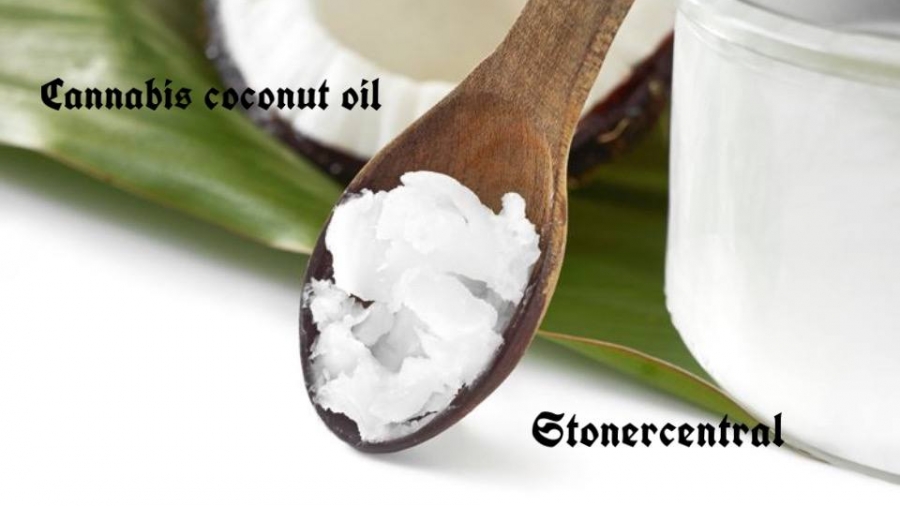Coconut oil has managed to infuse its way into some of the cannabis industry’s most sought-after products, including edibles and topicals, but why?
Why is coconut oil popular for cannabis infusion?
Coconut oil has a high concentration of fatty acids (saturated fats). The surplus of these fatty acids in coconut oil create a strong binding agent for cannabinoids.
Compared to olive oil, which contains a saturated fat content of less than 20%, coconut oil contains over 80% saturated fats and thus has the ability to retain far more cannabinoids during infusions, making it far more efficient. Coconut oil is a near-perfect medium for cannabis-infused oils.
Coconut oil uses and health benefits
Coconut oil also contains other sets of beneficial acids that have been known to have a list of potential health benefits. Lauric acid is a great example—when digested, lauric acid creates a monoglyceride that acts as an antimicrobial.
These fatty acids are found in abundance in coconut oil, making it a top contender for those looking for a healthier oil base than butter or canola oil.
Another fantastic benefit of using coconut oil is it will remain solid at room temperature. This makes it a great medium for using as a topical agent. Furthermore, its solid state allows the oil to be easily stored via gelatin capsules, a widely popular and highly effective method of consuming cannabis.
Gelatin oil capsules are so simple and easy to make at home—the ingredients can be purchased from just about any pharmacy or online, making for a fun and simple DIY project.
How to make cannabis-infused coconut oil
Aside from the fact that you can purchase coconut oil relatively inexpensively from just about anywhere, the process of decarboxylating and infusing cannabis into coconut oil requires only a few simple ingredients and can be done at home with minimal effort.
Recipe for cannabis coconut oil
Ingredients:
- 1 cup of ground cannabis flower (7-10 grams)
- 1 cup of coconut oil
Materials:
- Strainer or cheesecloth
- Grinder (a simple hand grinder works best; appliances like blenders and coffee grinder pulverize the cannabis, resulting in edibles with bad tasting plant material)
- Double-boiler, slow cooker, saucepan, etc.
Directions:
- Grind your cannabis. You can include the entire plant, just the flower, a little bit of both—this is all a matter of preference. Just keep in mind that anything small enough to fit through the strainer will end up in your finished product, so again, do not grind your cannabis to a fine powder.
- Combine oil and cannabis in your double-boiler, slow cooker, or saucepan and heat the two together on low or warm for a few hours. This allows for decarboxylation (activation of THC) without scorching (which destroys the active ingredients). Cooking can be done a variety of ways: in a slow cooker on low for 4-6 hours, stirring occasionally; in a double-boiler on low for at least 6 hours (8 is better), stirring occasionally; or in a simple saucepan on low for at least 2-3 hours, stirring frequently (a saucepan is most susceptible to scorching). In all cases, a small amount of water can be added to the mixture to help avoid burning. Note: whatever method you choose, temperature of the oil should not exceed 245°F.
- Strain and store the oil. Do not squeeze the cheesecloth; this will simply add more chlorophyll to your oil. All remaining plant material can be discarded or used in other dishes if you have the wherewithal. The oil’s shelf life is at least two months, and can be extended with refrigeration.
How to use cannabis coconut oil
Once you’ve got an infusion of coconut oil, the uses are endless!
- Combine your infused coconut oil with beeswax and aloe to make your own an infused cannabis topical
- Use your coconut oil in place of oil in a recipe of your choice to make a variety of infused dishes (try Herb Roasted Potatoes!)
- Infused coconut oil can easily be used as a lubricant in the bedroom (But be safe! Coconut oil may weaken condoms)
- Put your infused coconut oil into capsules for easy measurable dosing
- Make an infused cannabis tea latte
Expect to see coconut oil remain a staple in future cannabis infusions across the market. As major brands continue to innovate, coconut oil should thrive on the ingredient lists of more products to come.
If, however, you don’t have access to a dispensary near you or want to try a fun DIY with your own material, you can always make your own at home. Trust us, you’ll go coconuts for this stuff!
How to make CBD coconut oil
For those who don’t want the effects of THC in their infused coconut oil, you can infuse it with CBD instead. Simply follow the recipe above but use CBD flower instead of THC flower to get the health benefits of CBD.
This post was originally published on April 16, 2016. It was most recently updated on April 16, 2020.

Wow thank you! I can’t wait to try this. Gonna be making some healthy edibles! Btw, cannabis coconut oil is very good for my anxiety. Thank you for the good read.